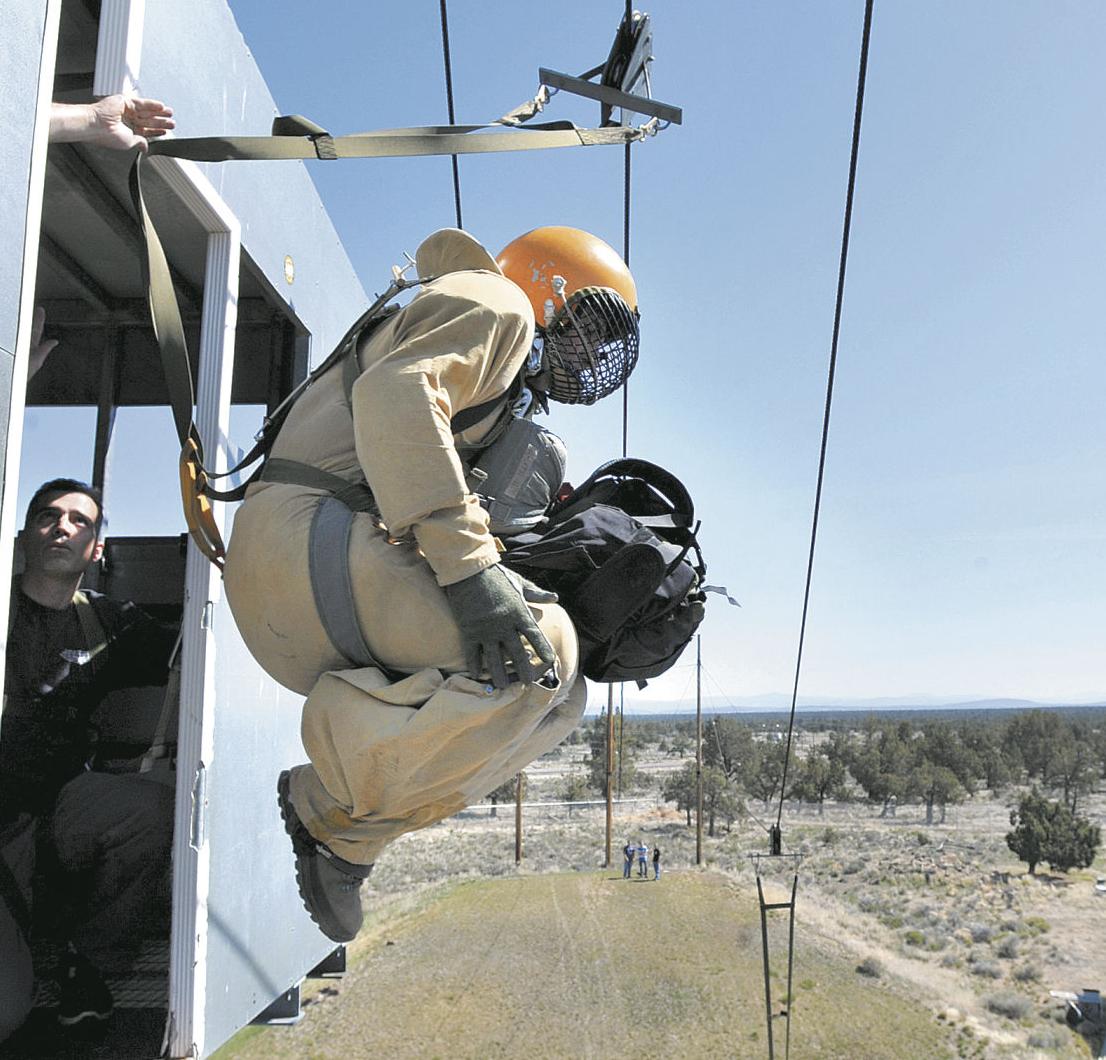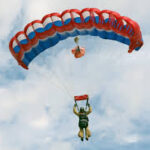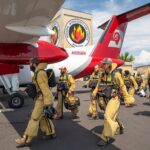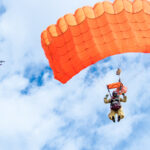
In the world of wildland firefighting, smokejumpers are considered an elite group — a highly trained Delta Force-style crew that is few in number but essential to keeping communities safe.
The need for smokejumpers is increasingly important in an era of climate change and dry forests that can burn out of control, flames racing down slopes toward towns and cities.
Yet despite their importance, the smokejumper world is often shrouded in mystery. How exactly do they safely leap from a plane into a fire zone? And once there, how are they equipped to put out a wildfire?
The Bulletin had similar questions on a recent visit to the smokejumper base in Redmond. The following is the result of our findings.
Smokejumper 101, the basics
Similar to hotshot crews and other wildland firefighters, smokejumpers are deployed to put out forest fires. The main difference compared to other crews is that smokejumpers parachute into a fire zone. Firefighting tools, food, water and camping gear are also parachuted out of a plane.
Because they are dropped into remote locations, smokejumpers must also hike out with their gear and equipment to a road where they can be picked up by a support vehicle. Deployment calls come in quickly after lightning storms that set off small fires.
“We try to catch fires quickly when they are at their smallest size so they don’t become the project fires you see on the national news,” said Josh Cantrell, base manager for the Redmond unit.
Smokejumpers wear specially made Kevlar suits built to resist rocks, branches and other sharp objects, as well as heat from flames. Hockey and motocross padding form part of their protective gear. Helmets are fitted with a cage-like face shield.
To ensure safety, jumps are made with a backup parachute and equipment to repel out of a tree. Camping gear includes sleeping bags and tents. Other tools of the trade include fire shelters, a GPS unit, handheld radios and disaster kits.

Oregon’s only smokejumper base
The U.S. Forest Service operates seven smokejumper bases in the U.S. Two are located in Idaho (Grangeville and McCall) and two are in Montana (Missoula and West Yellowstone). Washington (Winthrop), California (Redding) and Oregon (Redmond) are other states with bases. The Bureau of Land Management operates bases in Idaho (Boise) and Alaska (Fairbanks). The Redmond smokejumper program was founded in 1964.
The Forest Service currently employs 320 smokejumpers nationally. Redmond has around 40 smokejumpers. While most smokejumpers are men, Redmond has one female jumper.
Anyone thinking of applying to become a smokejumper must already have experience working the frontlines of a wildfire, either as a hotshot or on a wildland firefighting crew. No parachuting experience is required.
“We are not training people how to fight fires, we are taking firefighters and training them to do this and using the skills they have from their hotshot crew,” said Cantrell.
The training and testing period includes performing 25 jumps, meeting different criteria each time.
Where are smokejumpers deployed?
Smokejumpers are a national resource and can be deployed anywhere in the United States. They sometimes find themselves in the south and southeast, for example, in winter when fire season is still active in those parts of the country. U.S. smokejumpers can even be deployed overseas. Redmond smokejumpers have worked in Canada and Australia.
The average time spent on a fire is two nights but can last up to two weeks. How long they will be away is impossible to predict when each mission starts.
“You don’t buy a gallon of milk or produce and expect it to still be good when you get back. You manage your life based on that. Knowing that you may disappear for a while,” said Cantrell.
Once the fire is out, the smokejumper crew must assemble its gear in a pack-out bag and start hiking to a pick-up spot. The bag — with jump gear, tools, trash and firefighting equipment — typically weighs around 110lbs.
Smokejumpers in the Cascades usually try to get on the Pacific Crest Trail and hike to a trailhead where pick-up by vehicle is possible. The trek out may only be a mile but can also be 15 miles or more.
How much time smokejumpers get back home varies and is unpredictable. They may get a few days between jumps or a week or two may pass if its a quiet fire season.
When things get busy during peak fire season there may be no rest at all, especially for smokejumpers deployed far from their home base.
For example, if Redmond smokejumpers have been working a fire in Montana, they will need to come back to Oregon by plane. That plane is probably equipped with parachutes and if a resource order comes in, the smokejumpers may need to bail out and fight another fire before they get home.
Smokejumpers have an apropos term for this — it’s called jumping dirty.

What happens when they aren’t fighting a fire?
Even when there is no deployment order, smokejumpers remain busy by repairing equipment, rigging and cleaning parachutes (which pick up a lot of debris after landing in a wilderness area), and building fire packs that include tools, camping gear, equipment and water.
Smokejumpers also have a tradition of fashioning their own jumpsuits and as a result, become skilled at working with industrial sewing machines. They must also stay fit and pass an annual physical test. The test includes seven pull-ups, 45 sit-ups, 25 pushups and a 1.5 mile run in 11 minutes or less.
“This is in addition to the same requirements all fire line qualified firefighters must perform, including an arduous pack test where you walk three miles in 45 minutes (or less) wearing a 45lb weight vest,” said Cantrell.
Rookie smokejumpers must pack 20 parachutes as practice (each one opened for review by senior smokejumpers) before they can jump with a parachute they packed themselves.
Link to Source: https://www.bendbulletin.com/localstate/environment/faq-smokejumpers-largely-unknown-but-a-critical-resource/article_5d384094-5ae6-11ee-8870-c736ec1aea47.html






